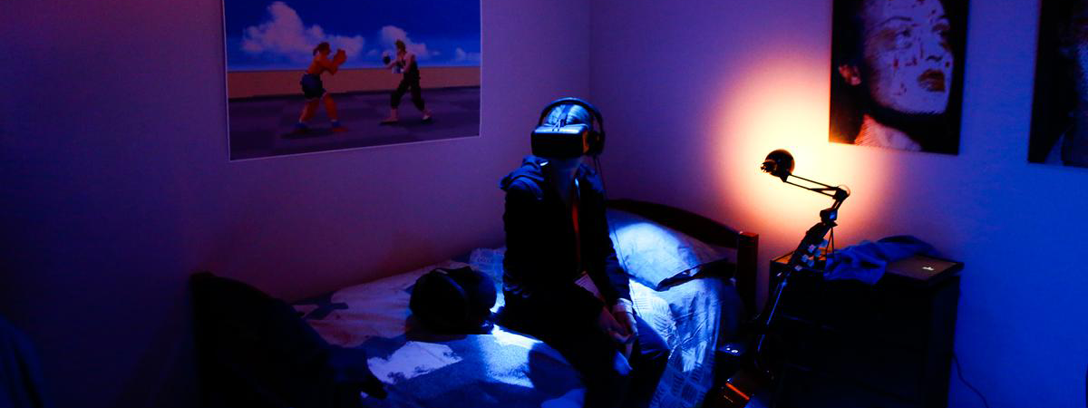Eric Hynes
I ’ll admit it: I flinched. Even though I was consciously wearing a virtual reality device, and though I knew I wasn’t actually standing in a field of buffalo, when a beautiful beast approached from the left and brought his giant head up to “mine,” I flinched. The sensation wasn’t exactly on the level of people running out of the way of the Lumiere train, but over a century of motion pictures later, it would seem to be in the same league.
This year the annual New Frontier exhibition at the Sundance Film Festival is dominated by interactivity, and by experiments in Virtual Reality in particular. Most of the projects fluidly swing between the poles of game play and narrative, collectively edging closer to establishing new art forms for their artistry. And considering the immersive potential of the technology, the main question that looms above all of the projects in New Frontier is what to marshal that potential towards? For entertainment? For business? For education? For social justice?

program. ©Sundance Institute | Ryan Kobane
On the socio-historical front are Assent, in which Oscar Raby crafts an autobiographical interactive documentary about Chile’s Caravan of Death in the aftermath of the 1973 coup; Project Syria, in which the user visits a busy street in the Aleppo district of Syria when a rocket hits; and 1979 Revolution Game, a video game/documentary installation in which the user partakes in the Iranian revolution.
Meanwhile Ian Hunter’s Kaiju Fury! channels the early Mutoscope viewing devices, in which the user stares into a cardboard box and experiences a short burst of 360-degree, monsters smashing the city popcorn entertainment. In Birdly, the user lies face down in a T-frame and experiences the physical and visual sensation of flying above a city as a majestic bird. And in Evolution of Verse, the user is immersed in a land of animated poetry, where a train explodes into birds, and birds transform into multicolored streamers that fall all around you. It’s the most fully-formed, self-contained work of VR art I’ve yet seen, matching the wide open potential of the technology with a playful, surrealistic visual sense.

Yet ultimately it was that encounter with the buffalo that made the greatest impression, and was a perfect evocation of the issues at play in Virtual Reality, which Oscar-nominated director Danfung Dennis explores throughout his experiential doc essay film Zero Point. While various innovators and thinkers mull over the psychological potential and pitfalls of the emerging technology, the user is taken everywhere from an Army training demo to a kite flight on the beach to those buffalo on the plains. While I walked away feeling as if I’d spent time with the animals, and now know what it’s like to look into their massive black eyes, how do I reconcile that flinch, the physical memory of having been somewhere I actually wasn’t? What does and what will it all mean—psychologically, socially, and yes, physically? As this year’s New Frontier illustrates, we’re not far off from knowing the answers.




